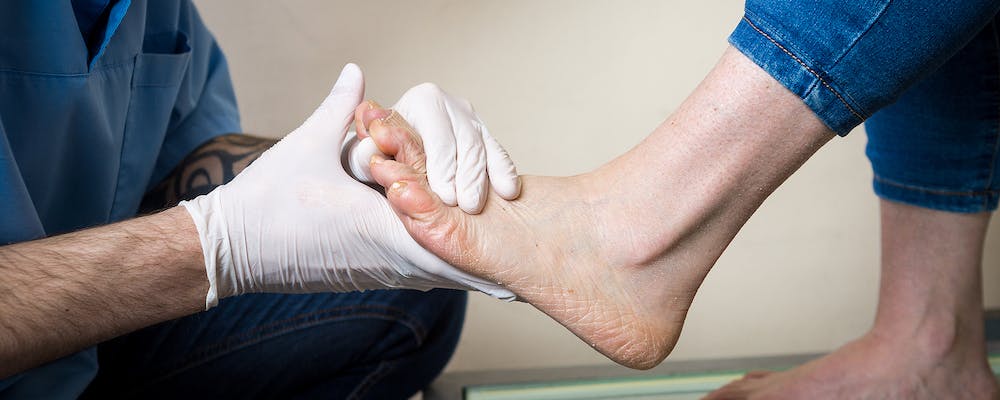Do you wear orthotics? Do you like having to switch them all the time between your different shoes? Do you have to buy multiple pairs or specialized shoes to accommodate them? Do you enjoy shelling out 100’s of dollars a year, hoping your insurance will cover them? Do you ever wonder if they’re even worthwhile? We’ve helped many of our patients get rid of their orthotics, and we can show you how to do the same. Contact us HERE to book a session with one of our professionals.
It is important to note that there are 2 main types of orthotics: Corrective orthotics and Supportive orthotics. Corrective orthotics are temporary orthotics worn generally for 6-24 months to correct a specific biomechanical deficiency. Your chiropodist or podiatrist may need to adjust the orthotics more than once as your feet adapt during this time, but after the correction is made you shouldn’t need them any further.
Supportive orthotics on the other hand, are designed to take over the work that the arch of your foot is designed to do. These are usually for easily correctable mechanical issues in the arch of your foot. What happens then, is that your body becomes reliant on the orthotics to provide the support that your foot should be providing. As a result, you need to be wearing your orthotics all the time, getting new ones every year or so. This is great for your clinic’s revenue, but not great for you.
Think about it: If you take a mould of a dysfunctional foot and hold it in a dysfunctional position, how are you going to get any better? We’re going to show you the most common issues that people are prescribed orthotics for, and what you can do to avoid them, or help wean yourself off of them.
Flat Feet
By far, the most common reason that we hear for people to get orthotics is flat feet. For the vast majority of these people, their ‘flat feet’ are simply weak feet. We are designed to be barefoot, but since we wear shoes all the time, the muscles that support the arch of our foot don’t have to work as hard, and get weak as a result. Orthotics are then often prescribed to help support and maintain the arch of your foot. Now even more of the work is not done by the muscles in your foot and the problem just gets worse! These kinds of orthotics are a guarantee that you will always need orthotics.
So how do we avoid this? The easiest way is to simply be barefoot more. Walking around the house on some nice carpet, and especially outside on the grass on a nice day feels wonderful on your feet, and allows the muscles in your feet to get a good workout too. If you aren’t used to it, just go for a few minutes at a time so you don’t overwork them too much. They’ll adapt pretty quickly though, and as they do, you’ll notice your arch start to come back up again. The easiest way to see this is to look at a wet footprint on the ground.
Being barefoot is not very practical most of the time however. Here are some other things you can do to give those muscles a chance to work: When you are stuck at your desk for long periods of time, kick off your shoes! You can make fists with your feet, try to pick up
pencils, crumple up paper, etc… If you happen to have one of those stress balls on your desk, your feet can play with them just as well as your hands can!
The muscles in the arch of your foot are just like any other muscle: If you don’t use it, you lose it. So use it, and get your foot muscles, and your arch, back in shape.
Leg Length Discrepancy
Has anyone told you that you have one leg longer than the other? Do you have an orthotic with a heel lift? This is something we see quite often in our clinic, and my response is always the same. Unless they have taken X-Rays and measured the length of the bone, or if you’ve had a hip replacement, and the surgeon did not believe in “Measure twice and cut once”, you can safely assume that you do NOT have a leg length discrepancy!
For the vast majority of people with leg length issues, the problem comes from the pelvis. The pelvis can get out of balance from injuries or postural issues, and give the appearance of having one leg longer than the other. If you add a heel lift into the equation, you are now forcing your pelvis to remain in a compromised position, which can lead to all kinds of leg and back issues.
If someone tells you that your legs are different lengths, always ask that they check to see if your pelvis is balanced. If they don’t know how to do that, or don’t understand why it’s important, make sure that you see a professional who does, because a heel lift is only going to make things worse for you.
High Arches
High arches arches are simply the opposite of fallen arches: The arch of your foot is stuck in a high position. A high arch is not a bad thing unto itself; your foot needs a strong high arch when you’re running and active for effective force transfer, much like it needs to be flat when standing for stability and support. Getting stuck in those positions is when we start to get into trouble.
High arches can often be a developmental issue, especially during growth spurts, where the bones grow faster than the soft tissue in your feet do. This will tend to hold the arch in a higher position, and not allow it to fully relax. If not addressed, the soft tissue in the arch can become chronically shortened. Tight footwear, especially high heels are another common cause of high fixed arches.
Once again, holding your foot in a fixed high arch position is not the answer, getting your foot moving is! Since we want to get the muscles loosened, soak your feet in hot water for a few minutes to warm them up. Then while sitting comfortably, use a tennis ball under your foot to massage the arch. You may have to fight the dog for it, but few things feel nicer than a good foot massage after a long day on your feet. You can even keep one at work to use at your desk.
Also, be sure to regularly stretch out your calves and your hamstrings too. The connective tissue under your feet is continuous with the muscles in the back of your legs, so stretching
your legs will help take pressure off the bottom of your feet. And while you may love your high heels, they don’t love you back. If you need to wear heels for something, bring a second pair of comfortable shoes to wear to and from the event, then treat your feet to a good soak and tennis ball massage afterwards; they’ll need it!
While orthotics are very useful for certain conditions, you don’t have to rely on them forever. At Action Physiotherapy, we’ve helped many people regain the strength and mobility in their feet to not have to rely on orthotics anymore.
If you’d like to get these results too then click Click HERE to book an appointment or give us a call at 905-457-7475 so we can get you back to doing what you want to do and what you love.
I honestly want you to get rid of this pain and back to doing the things you love.
 Robert Kappes, Registered Physiotherapist
Robert Kappes, Registered Physiotherapist
Click HERE to view our video on this topic on Facebook

